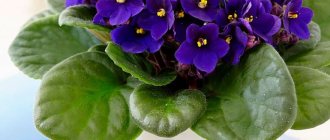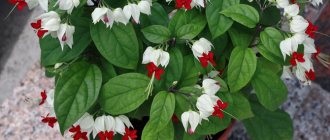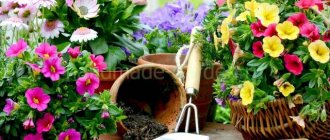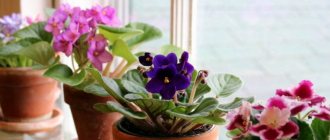- Reports
- Plants
- Houseplants
Indoor plants bring great benefits to humans. Thanks to them, the air becomes cleaner, because green leaves release oxygen, which means it’s easier to breathe in the house. Plants will make dry air more humid and also reduce its toxicity. Some species, such as aloe, are even used in folk medicine as anti-inflammatory and bactericidal agents.
Typically, houseplants are divided into several broad groups:
1) Decorative and decorative-flowering plants - the most common group of plants, as a rule, not particularly demanding to care for, and therefore widespread both in apartments and in municipal institutions. Ornamental plants are usually small shrubs that do not have flowers or fruits. Decorative flowering plants can both bloom and bear fruit.
2) Bromeliads are bright and unusual plants that love moisture. The most famous plant of this species is pineapple. Aechmea is usually grown in indoor conditions. The peculiarity of these plants is that after flowering they usually die.
3) Cacti and succulents are plants that accumulate water in their stems and leaves, so they do not need frequent watering. The most famous succulent is Kalanchoe.
4) Ferns and palms are special types of ornamental plants, famous for their large spreading leaves. They need good hydration not only of the roots, but also of the leaves. They look impressive in large, bright rooms, while ferns are best placed in hanging flowerpots.
Despite such a wide variety of plants, each one is unchanged in three components.
Firstly, strict adherence to temperature conditions is necessary. Each plant has its own, and therefore, before purchasing, you need to familiarize yourself with the conditions of maintenance. Indoor plants do not like sudden changes in temperature, and therefore in winter, if the room is often ventilated, it is worth removing the seedlings from the windowsill to a warmer place. The maximum acceptable temperature, subject to normal humidity, is about 30 degrees.
Secondly, it is important to give the plant the required amount of light. If the plant is light-loving, it is important to place it closer to the sun, and if it gets dark outside early, then it makes sense to purchase a special lamp for plants. Lack of light leads to yellowing and lack of growth. On the contrary, it is better to remove shade-loving plants from window sills and place them in those corners where there is not too much light. Excessive light can cause burns and drying out.
Thirdly, proper watering. The most important thing is to observe it regularly. The watering interval should be even; neither excess nor lack of moisture should be allowed. In addition, any plants need to enrich the soil with microelements.
It is difficult to imagine a modern home without indoor plants. In most apartments you can find at least one pot of violet or cactus. Some even turn their home into a greenhouse. Plants, like pets, need care and attention. Proper care will transform even a seemingly unsightly plant, turning it into a real interior decoration.
Message 2
Almost every home that loves indoor flowers has chlorophytum. There has been a long-standing debate about its benefits and harms. How do you know if you should keep this plant indoors where people live?
Numerous studies claim that indoor plants release oxygen and absorb carbon dioxide, thereby purifying the room. What can be said about chlorophytum? This is a plant with long dense leaves with a white border around the edges or in the center of the leaf. It does not require special care and is in a friendly neighborhood with other plants. It decorates the interior of the room with its appearance and hanging inflorescences.
In modern homes, synthetic finishing materials are increasingly used for walls, floors, and ceilings, which, when the air temperature changes, emit toxic substances: formaldehyde, phenol, etc. And it is chlorophytum that can reduce the impact of harmful substances on a person in his home.
Florists recommend placing this plant in the kitchen, where the airspace is considered the most polluted and the most harmful substances are released from household appliances, artificial surfaces and gas. The flower is not picky about lighting and sunlight; in addition to purifying the air in the room, chlorophytum is also capable of moisturizing it. After all, the plant comes from the tropics and subtropics. This ability of the flower requires constant watering and not allowing the soil in the pot to dry out.
To enhance the plant’s ability to moisten the room, it is recommended to add activated carbon to the soil. Another amazing ability of chlorophytum is to destroy mold and mildew and counteract microorganisms. But even though the flower is considered unpretentious, it is still necessary to wash its leaves occasionally under running water to remove accumulated dust. In the warm season, this plant looks elegant on a personal plot, adding to the overall design of the area.
They say that this amazing plant is capable of reducing negative energy around itself, is useful for humans and is safe for animals. Chlorophytum is able to harmonize the behavior of people living in the room, and reduces the potential for conflict between them. You can confidently place this amazing plant in your home.
2nd, 6th grade. The world. Technology
Types of indoor plants. presentation on the world around us on the topic
Slide 1
Types of indoor plants
Slide 2
Man has always wanted to have beautiful plants next to him to decorate his home. The concept of a “houseplant” has existed since the moment when he thought of throwing a seed not into a field but into a pot of soil. History of indoor plants The temples of ancient Hellas were decorated with vases with plants. More than 1,000 years ago, the art of bonsai originated in China, which moved to Japan and gained real recognition there.
Slide 3
Ficus Its homeland is the tropical countries of Africa, Asia and America. In addition to ficus, this family includes such well-known plants as mulberry, breadfruit and one of the most beloved fruit crops of the peoples of the ancient Mediterranean and Mesopotamia - figs (fig tree). Ficus is one of the most common indoor plants. Mature plants can live at home for many years. The longevity of ficus trees is ensured by proper care.
Slide 4
Begonia Begonias grow mainly in partial shade in tropical rainforests, they are also found in the mountains, less often you can find them in dry tropical and subtropical regions of Africa, Southeast Asia, America, and on the island of Madagascar. Of all the diversity, there are several common characteristics by which begonias are combined into one genus - asymmetrical leaves located on a succulent stem, usually collected in inflorescences; flowers appear from late June to September. The fruit is a triangular capsule with numerous small seeds.
Slide 5
The homeland of balsam is the subtropics and tropics of Asia and Africa - the island of Zanzibar, India, Malaysia, southern China. Impatiens For its abundant and long-lasting flowering, the plant received the English name “zealous Lisa.” The Austrians call balsam “Beautiful wreath,” comparing the flowering plant with a beautiful girl. Popularly called “impatiens” and “Vanka wet”. The plant received this name for the droplets of sugary liquid that protrude from the edge of the leaf.
Slide 6
Tradescantia is native to the tropical part of North America. The name “Tradescantia” appeared in the 18th century. and came from the name of the English gardener and naturalist John Tradescant, who lived at the beginning of the 17th century. He founded one of the first botanic gardens and a natural history museum in London. It can be kept in a bright and shady place, but in bright sun the leaves of green Tradescantia turn yellow and lose their decorative effect. Variegated forms, on the contrary, require more light, then the color will be the most intense.
Slide 7
Coleus Its homeland is the tropical countries of Asia and Africa. Coleus is a light-loving and heat-loving plant. When grown in well-lit places, the color of the leaves of the plant becomes bright, and when there is insufficient lighting, the color of the leaves turns pale. Coleus needs moderate moisture in winter and plenty of moisture in summer.
Slide 8
Aspidistra This plant is native to the mountainous areas of Japan, China, India and Northern Vietnam. Translated, aspidistra means “snake indicator,” so by the swaying of its leaves one learns about the presence of poisonous snakes crawling in the thickets and touching the petioles. Although aspidistra can grow in any conditions, it must be protected from direct sunlight. It can be placed even in the back of the room or on northern windows
Slide 9
This is one of the few houseplants that blooms all year round, which is why it is called the queen of houseplants. This plant is native to the Uzambara Mountains of East Africa. Violets are distinguished by a variety of colors and shapes of flowers and leaves. It is best to plant violets on a north window. Frequent watering (more than once a week) can lead to rotting of the roots and leaves of the plant. Violet uzambarica
Slide 10
They are mainly found in African savannas, where they grow on rocky or sandy soils. This is why pelargoniums (geraniums) grow best in the sunniest places and do not like waterlogged soil. Geranium is called “doctor ear, nose and throat”. Geranium essential oil is useful for the prevention of ARVI, acute respiratory infections and influenza. The smell of geranium repels moths. Geranium also has a calming effect. . Pelargonium or Geranium
Slide 11
Hydrangea is native to Japan and China. And translated from Greek, the name of the plant means “loving water.” But in winter it should be watered quite rarely. Growing hydrangeas is not particularly difficult if you follow certain rules. Hydrangea loves bright, diffused light and tolerates partial shade well. Hydrangea
Slide 12
Ivy is native to Northern Europe, so these plants are quite hardy. They grow in a wide variety of conditions: both in deep shade and in bright sun. It should be watered abundantly in summer and moderately in winter. Ivy
Slide 13
The homeland of chlorophytum is South America. Chlorophytum is one of the most common indoor plants. This is not surprising: it grows quickly, has beautiful curved leaves, and in spring and summer, first small white flowers and then tiny rosettes of leaves appear on thin stems. They can be separated and rooted. Chlorophytum From spring to autumn it should be watered abundantly (the soil should be moist all the time) and moderately in winter.
Slide 14
This plant is native to the deserts of South Africa. Aloe blooms very rarely in indoor conditions, hence another name appeared among the common people - agave, which blooms once every hundred years. However, with proper care, aloe can bloom every year. Aloe loves bright light and moderate watering, especially in winter. Aloe juice contains useful enzymes, vitamins, and antimicrobial substances, therefore it is widely used in medicine. Aloe
Slide 15
Sansevieria is native to Central and South America. Like aloe, sansevierias love good lighting, sufficient watering in summer and moderate watering in winter. Sansevieria is the oldest cultivated plant in Mexico. The Indians wove coarse fabrics, ropes and sea ropes from its fibers. Sansevieria or pike tail
Slide 16
The homeland of Kalanchoe is Africa. Kalanchoe is a viviparous plant: “babies” appear between the leaf cloves, small plants with aerial roots that fall and take root in the soil. Kalanchoe prefers a bright, sunny window and moderate watering, especially in winter. Kalanchoe
Slide 17
The origin of zygocactus is South America. People call it “Decembrist” because of its winter flowering. Zygocacti, unlike others, do not tolerate direct sunlight and like abundant watering and frequent spraying. Zygocactus During the formation of buds, which begins around September, you should not touch or move the plant to avoid the buds falling off.
Slide 18
Houseplants need Light and warmth Water Nutrient-rich soil Clean air
Slide 19
Rules for caring for indoor plants 1. Water the plants with water at room temperature. The water should sit for several hours. In summer, flowers are watered in the evening, in winter - in the morning. 2. Loosen the surface of the soil in the pot with a stick so that air can flow to the roots. Be careful not to damage the roots of the plant. 3. Wipe dust from large, smooth leaves with a clean, damp cloth or sponge. Plants with small leaves and pubescent leaves are cleaned of dust with a soft brush. 4. Carefully remove dry leaves and twigs from plants. Keep flower pots and stands clean.
Bokarneya - plant care
With proper care and timely watering, bocarney can live for about 7 years. This plant is unpretentious, takes root in apartments and easily tolerates the heating season. The only thing that can significantly harm a person from Mexico is drafts. In nature, there are three varieties of bocarnea, which differ in the length and shape of the leaves.
If you follow simple care recommendations, your plant will look as gorgeous as the bocarney, the photo of which is presented above. So, here are some tips that you should listen to if you decide to grow this unusual plant in your apartment.
- Firstly, being a native of a hot area, bocarnea loves light very much, so it is better to place the flower pot on the windowsill on the sunny side, and in the summer take it out onto the balcony.
- Secondly, sometimes it won’t be superfluous to spray the plant and wipe the leaves with a damp sponge, especially if the room temperature is very high.
- Thirdly, bokarneya does not require frequent watering. This should be done only when the soil dries out, about once a week.
- Fourthly, the plant must be fed during the period of active growth. Fertilize the soil once every two weeks after watering.
The tips listed will help anyone who has decided that their apartment should definitely be decorated with bocarney. Photos of this beautiful plant do not convey all its beauty. Therefore, we advise you to see this for yourself.
Popular reports
At all times, girls were proud of their dresses, which were decorated with fantastically beautiful patterns. Initially, all the patterns were embroidered by hand, and after a while, to make the work easier, they began to use a loom. This is how patterned weaving arose.
One of the main miracles that nature has created is the forest. After all, it is not only a decoration of our planet, but also a regulator of water balance, and protection of the earth from drought, as well as a natural apparatus that saturates it with oxygen and purifies the air.
Personality. Contemporaries call Emperor Alexander I the Blessed, and, indeed, the emperor was a man of high moral principles, did not like the burden of rule that fell to his share and paid a lot of attention to the problems of his spiritual development.
Features of care
Let's learn how to care for decorative indoor plants.
Watering
All plants, without exception, need moisture. And, since in closed ground conditions there is nowhere for flowers to get water, watering is mandatory. Some plants can survive temporary drought, and some begin to wilt at the slightest delay in the next moisturizing procedure. Bulbous and tuberous flowers tolerate drought better due to the moisture reserves accumulated in their fleshy parts. But flowers with thin stems and delicate leaves can die very quickly due to lack of water.
The frequency of watering depends on the time of year, plant variety and ambient temperature. In winter, water is moistened less often, and in cool conditions, too. In any case, before watering, be sure to make sure that the top layer of soil in the pot is already dry.
Feeding
Indoor plants need regular feeding with balanced mineral compounds. Flowers cannot take nutrients, like water, anywhere except from an external source. The soil in the pot, initially nutritious, gradually (sometimes quite quickly) becomes depleted.
Watering, leaching of water with minerals from drainage holes, and the very life of the flower lead to depletion. Only, perhaps, cacti can exist in closed ground conditions and feel good without fertilizing. All other plants require regular fertilization.
Take care to balance the composition; if possible, purchase fertilizers designed specifically for this type of plant. Make sure that the fertilizer contains the main microelements - potassium, nitrogen and phosphorus. Nitrogen is needed for the growth of green mass, potassium for roots and growth, phosphorus for flowering. After the plant begins to bloom, be careful with nitrogen, as it negatively affects the formation of buds.
Loosening
To prevent white salt crust from settling on the surface of the substrate, and also to increase permeability, loosen the substrate regularly. But pay attention to the structure of the root system: if it is superficial, be especially careful.
Trimming and pinching
Many novice gardeners are wary of the pruning procedure, considering it too complicated and traumatic for the plant. However, nothing is impossible, and after a little practice, pruning will no longer seem unattainable.
If we are talking about removing the growth point at the top, then in this case they generally use the simplest technology - pinching. If the flower has thin stems, pinching can be done using two fingers. If the flower is fleshy, it is better to use scissors. For pruning, you always take either a pruner, a knife, or scissors: this procedure cannot be carried out manually.
Transfer
All indoor plants need this procedure, especially in the early years of life. Young flowers grow quickly, so they are replanted every spring in the first three years of life. Adult plants need to change their place of residence much less frequently, and the frequency of replanting depends in this case on the growth rate of the flower, its size, and other circumstances.
Sometimes an unscheduled replanting is required - usually it is carried out in case of plant diseases or severe pest damage. If critical overmoistening of the soil occurs, it is better to replant without waiting for the roots to rot.
If the transplant is planned, a new pot for the young plant is taken 2-3 cm in diameter larger than the old one. Adult flowers, growing slowly, are often transplanted into the same pot: you just need to replace the soil in it.
Popular message topics
- Rights and responsibilities of a citizen
Every citizen of the Russian Federation has his own rights and responsibilities, which he must know and unconditionally observe. The set of rules is dictated by the Constitution of the Russian Federation. This is the main document that regulates all actions of a citizen - Natural sources of hydrocarbons
Almost every day people use medicines, paints and varnishes, synthetic detergents, plastic products - these are precisely the organic substances that are produced by synthesis from hydrocarbons. - The Caucasus in the life and work of Lermontov
The Caucasus occupies a very important place in the works of Russian writers of the 19th and 20th centuries. Many writers decided to leave big cities (sometimes of their own free will, sometimes not), change their surroundings and look for inspiration in the Caucasus. And we can say
Date palm
A date palm at home can develop well and delight its owners with its green leaves if certain care requirements are followed. This tropical plant loves sun, warmth and frequent watering. In winter, it is necessary to ensure that the temperature in the room does not fall below +15 degrees. It is better to place the plant near a window that faces south. If there is insufficient light, you can periodically use a lamp for additional illumination.
In summer, make sure that the plant does not stand in a draft. At this time of year, the date palm tree needs to be watered every 2-3 days and sprayed daily. If the summer is too hot, it is better to move the pot with the plant away from the window to avoid direct sunlight.
Asparagus
Asparagus is an indoor perennial flower. With proper care, it will decorate your home for at least 10 years. Let's start by choosing a location for the asparagus. A window that faces east or west is best. Here the flower will receive enough light and at the same time will be protected from direct sunlight. Asparagus is a heat-loving plant, so in the summer it would be a good idea to take it out into the yard or onto the balcony. If the flower is in comfortable conditions for it, you will see it yourself - its leaves will be a rich green color. If the asparagus begins to turn yellow and crumble, then it is worth reconsidering the methods of caring for it.
The varieties of indoor plants amaze with their diversity. Today we have focused on only a few of them. Flowers in your home are an excellent solution for interior decoration. When choosing indoor plants for your home, be sure to pay attention to where it will be located and how often you can water and fertilize it. For example, for a large living room, it is better to choose potted palm plants that require a large space. Deciduous plants that will not irritate you with a pungent odor are suitable for the bedroom. But you can safely place flowering ones in the kitchen. It is better to place pots with cacti near the computer in the children's room, which will absorb harmful radiation.
Report on the topic: “Indoor plants” 4th grade
The easiest way to create coziness in your home is to plant indoor plants in pots.
The finished plant can be bought at a flower shop. But it’s much more interesting to grow it yourself. The easiest way is to take a violet leaf, put it in a glass of water and wait for the roots to appear. Then, you need to plant it in a pot with special soil and water it. After some time, young leaves will appear. When they grow up, the old leaf must be cut off. Next you need to water the violet. With good care, she will soon delight her owners with beautiful flowers.
The most important thing in caring for indoor plants is to love them. Flowers feel everything and respond to positive emotions with beautiful blooms.











